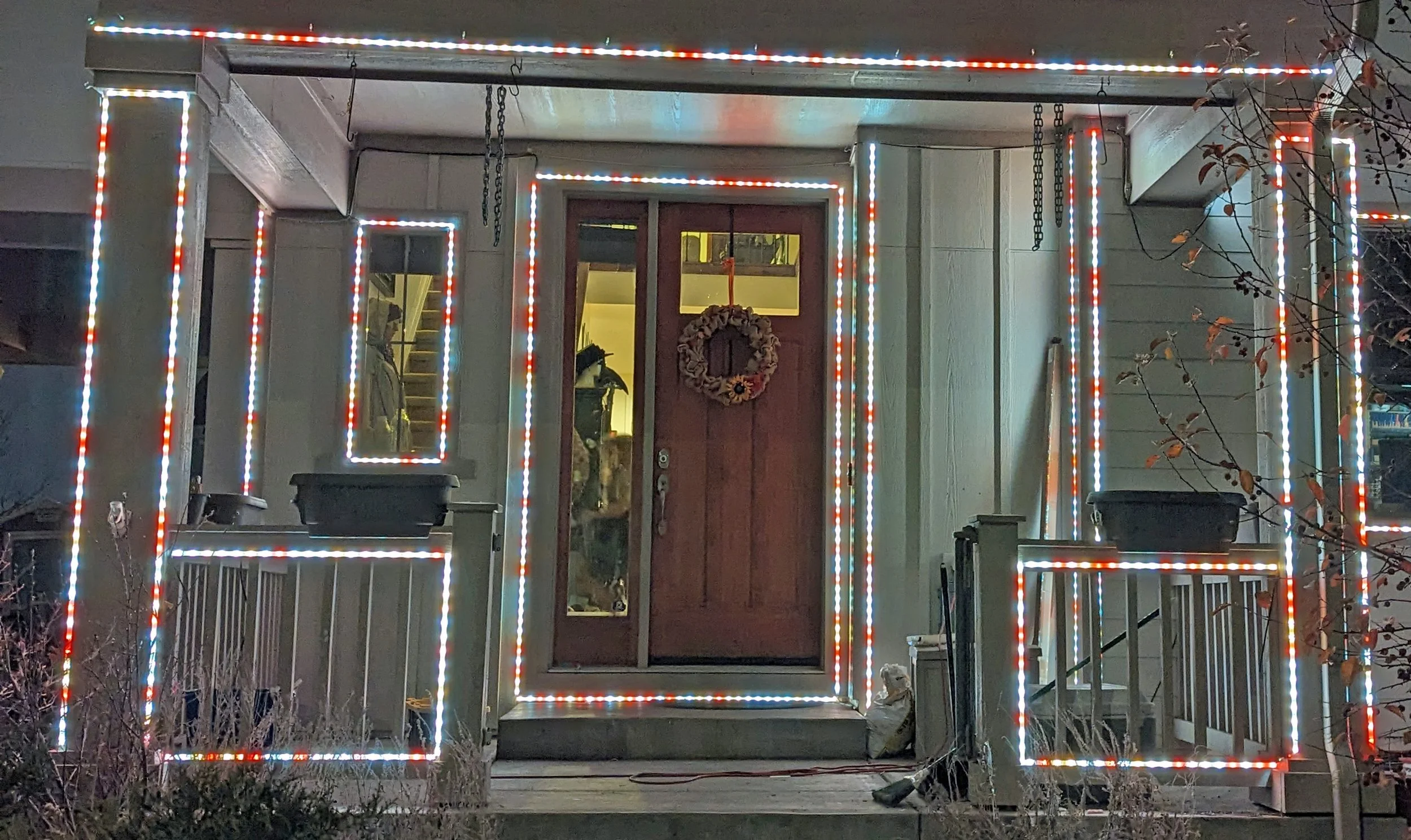Devon launched a long-term electronics project — decorating our house with year-round programmable LEDs that we can customize for holidays and special occasion. I’m 100% down with any project that eliminates the need to string lights in the dead of winter in Colorado.
He strung and programmed about 1450 lights this year and plans to expand next year. He hopes to eventually sync the lights with music. If you’re deranged enough to do something like this yourself, check out the supplies list below.
Check back next week for a DIY home light show that would make Clark Griswold spontaneously combust.
Supplies
12v i2c RGB pebble LEDs: strand of 1000 5 cm pitch
There is no documentation for these strands. The lead with the copper color is vcc, the middle is signal, and the last is ground.
QuinLED-Dig (We used QuinLED-Dig-Quad.)
Enclosure
Mounting plate (We had to drill our own holes.)
You can probably get away with a smaller power supply. We’re using 6 amps for about 1450 LEDs. Five might be workable, but you’d be maxing out that power supply, which could lead to a shorter lifespan.
Plug for power supply
Use an old PC power cable. Cut off the PC end and strip. Use some of that thicker wire to attach the power supply to the board.
Tools
A tool to saw the aluminum u channel. I used a one-handed reciprocating saw. Most of my tools are orange brand (Ryobi). Here’s a yellow-brand saw (DeWalt).
A tool to cut the plastic covers. I used electrician’s shears. That’s probably not optimal. A tool that can get a clean cut at a true 90-degree angle would have been better.
A tool to attach the u channel to the wall. I used a brad nailer. Here’s a green-brand brad nailer (Ryobi).
SoftwareInstructions on how to configure it for QuinLED
NotesIt’s vital that the voltage of your LEDs lines up with the voltage of the power supply. The QuinLED board can work with 5V, 12V and 24V, but it passes the current through, so it has to match the LEDs.
12V is generally better than 5V. All LEDs need roughly the same wattage. The higher the voltage, the lower the amperage because of Ohm’s law. You can get more power down a wire if you’re using the higher voltage, which means less power injection.
Masterwork Tools is an Amazon Associate and earns a small commission from qualifying purchases.
